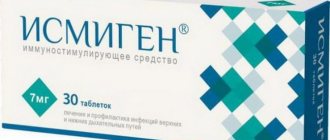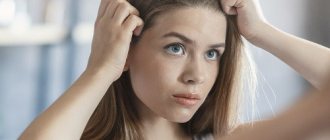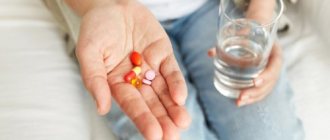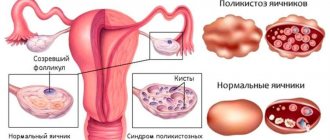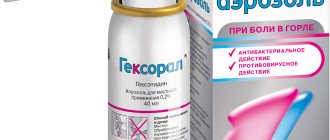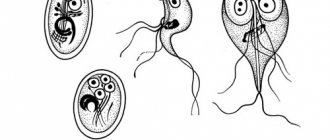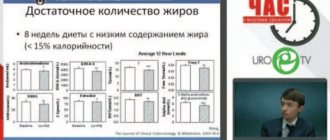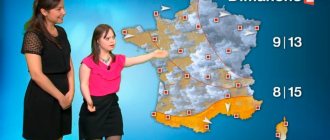Hyperactivity disorder (ADHD) is currently recognized as one of the most common behavioral disorders. As a rule, it is diagnosed in the first years of life, when hyperactivity . Many believe that this disease does not occur after adolescence. In reality, adults face hyperactivity.
Medical research shows that ADHD, even with early treatment, persists in 65% of those diagnosed with the disease. In some cases, psychiatrists and psychologists diagnose hyperactivity in a patient for the first time as an adult. This is often due to an error in the diagnosis earlier. They are often mistakenly attributed to manifestations of depressive disorders or anxiety syndrome. To successfully relieve symptoms, hyperactivity treatment is recommended at a very early age.
What to do if your child has hyperactivity
ADHD is most often diagnosed in childhood. Most often, parents of restless babies or teaching staff of children's educational institutions turn to specialists. The child understands others well. He hears and fulfills the requests of adults, but is too impulsive to accurately carry out the instructions received.
Adults often try to justify all the child’s pranks with this diagnosis. In reality, it is confirmed in no more than 3-5% of babies. Most of them are boys. The course of the disease differs:
- boys show a tendency to aggression and are characterized by hypertrophied disobedience;
- girls suffer from inattention, which can lead to learning problems.
In a third of children, ADHD goes away on its own during adolescence, without the use of specialized medical practices and medications.
Parents hold two polar points of view on the treatment of ADHD. About half consider the possibility of such a pathology to be far-fetched and refuse therapy, believing that the disorder will go away on its own with age. On the contrary, many parents exaggerate the danger of this disease for the development of the child. Hyperactivity requires mandatory monitoring by doctors and appropriate adjustment; in most cases, the pathology is successfully cured. Parents need:
- undergo a comprehensive examination to accurately establish a diagnosis;
- follow the specialist’s recommendations to create the most comfortable conditions for the child, carefully monitor the baby’s condition;
- fulfill all requirements, go through all necessary procedures;
- attend a consultation with a family psychologist.
A child with ADHD is characterized by an increased level of emotionality. He needs to be praised often, increasing self-esteem and self-confidence. In games, it is recommended to exclude competitive aspects that can lead to negative effects on the psyche. It is imperative to set boundaries for the child’s behavior. For example, give simple and executable instructions (take out the trash, wash your cup after yourself and other small tasks). The baby should grow up in the most favorable conditions, but clearly understand the boundaries of behavior so as not to become overly spoiled.
It is advisable to carry out diagnostics in a specialized medical center. Only in such a situation can a neurological disorder be confirmed, excluding simple increased activity or poor upbringing. A preliminary assessment of the condition can be carried out at a local clinic.
What is the best sedative for children?
All the drugs presented in the review demonstrate a safe composition, effectiveness, and comprehensive assistance to the child’s body. Choosing which product will help you buy one is not so easy, therefore, based on a comparison of the advantages and disadvantages, Vyborexperta.ru recommends:
- Tenoten for children is an anti-anxiety drug with a nootropic effect;
- Glycine is the people's choice, an old, time-tested sedative nootropic;
- Dormikind - homeopathic sleeping pills;
- Notta is a natural effective anxiolytic drug;
- Planetary Herbals is a dietary supplement with a good combination of herbal and mineral components;
- HiPP Linden blossom with lemon balm - herbal tea for sound sleep for a newborn and a young mother.
Every caring parent wants to find a safe remedy that can quickly calm a hyperactive, excited baby. Any alarming symptoms should be a reason to contact a specialist. Do not self-medicate, as we are talking about an unstable, vulnerable organism.
Treatment of hyperactivity in children
In medical practice, several options are used to treat hyperactivity in children. First of all, a thorough examination of the small patient is carried out. One of the main goals is to exclude potential pathology.
Further, experts prefer to prescribe non-drug courses. Psychological, pedagogical and psychological methods are used in the work. Participation in the treatment process of the whole family becomes an important condition. For this purpose, specialized family practices are used. This will allow you to establish contact with a child suffering from hyperactivity and develop a treatment program.
In acute situations and in the absence of effect in treatment using psychological classes and trainings, the following medications are selected:
- depressants are prescribed, Amitriptyline, Methylphenidate;
- Focalin, Vyvanse, Methylin contribute to increasing the level of concentration;
- glycine helps improve brain function;
- nootropic drugs Phenibut, Pantogam and others.
All of these medications are used simultaneously in the treatment of a child in exceptional cases. An individual therapy program is developed for each little patient.
Rating of sedatives for children
Sedatives can be medicinal, homeopathic or folk remedies; in any case, you need to consult a neurologist to determine the diagnosis. To narrow down the search, the VyborExperta project team collected the best proposals from each group, paying attention to the following criteria:
- Type of medicine;
- Composition, origin of components;
- Principle of action, therapeutic properties of the formula;
- Speed of action, how quickly relief occurs;
- Release form, solid or liquid;
- From what age is admission allowed?
- Indications for what symptoms it is used;
- Features of therapy, dosage regimen, dosage, course duration;
- Restrictions, contraindications;
- Safety, likelihood of side effects.
We have selected for you drugs with the best price-effectiveness ratio. These are 10 nominees of domestic and imported production. Reviews from doctors and parents identified the strengths and weaknesses of each product.
Hyperactivity syndrome in children
It is possible to assume that a child has such a diagnosis at a very early age. Already in the first months the child sleeps poorly. He has an excessively violent reaction to noise and bright light. He reacts violently to hygiene procedures and gets overexcited during the simplest games. There is a slight lag behind the norm in psychomotor skills.
The presence of the disease can be determined at the age of three years. Psychologists mark this age as the first turning point. All kids become capricious and demanding. Children with hyperactivity have a delay in speech development, movements are fussy and chaotic.
The syndrome is accompanied by physiological disorders. The baby often experiences headaches, increased fatigue, and is diagnosed with enuresis and nervous tics.
In the preschool years, children with the syndrome are slower than their peers to learn new material, which is explained by their insufficient ability to concentrate. This situation continues after entering school. The lag in the assimilation of knowledge is caused not by low mental abilities, but by the lack of the ability to concentrate attention and fully remember all the new material.
Emerging problems provoke increased sensitivity and aggressiveness in the child. He becomes anxious and whiny, and phobias develop. As a child with ADHD grows up, self-esteem decreases and complexes arise. Without treatment, they can last a lifetime.
The best soothing syrups for children
Syrup is the most used form of sedative for children under one year old. It is distinguished by its safe composition, mild operating principle, and pleasant taste. The liquid consistency reaches its destination faster and rarely has contraindications or side effects.
little hare
One of the most popular, according to reviews, sedatives for children is “Hare” from the Russian manufacturer Alkoy-Holding. It differs from analogues in its completely natural composition, the absence of alcohols, dyes, and chemical components. In this regard, doctors prescribe this syrup to infants and children prone to allergic reactions. It is indicated for insomnia, neuroses, restless behavior, and excessive mental stress.
Sedative functions are guaranteed by a complex of herbs - analgesic mint, valerian roots to improve sleep and support the endocrine system, lemon balm to relieve nervous tension, motherwort to normalize blood pressure, diuretic barberry, cumin.
They are supplemented with vitamin B6 and ascorbic acid, which improve the absorption of important substances. The drug is approved from the age of 3, in other cases according to a doctor’s indication.
Advantages:
- Natural components;
- Vitamin supplements;
- Safe formula;
- Comprehensive support for the body;
- Good taste;
- Inexpensive.
Flaws:
- Sugar;
- Only from 3 years old.
Regular use of such a sedative stabilizes mood, but does not cause drowsiness or lethargy. According to the instructions, the syrup should be given three times a day with food, 5-10 ml. The duration of the course is from 2 weeks or longer, the effect is cumulative.
Planetary Herbals
Another natural herbal sedative, but from the American brand Planetary Herbals. This is a dietary supplement with a multicomponent combination of medicinal herbs, fruit extracts, essential oils, amino acids and minerals.
Plants include chamomile, cereal seeds, hawthorn berries, licorice root, wild amla berries, etc. They are supplemented with anise essential oil, magnesium and taurine.
The thick, sweet consistency smells like anise, the taste has hints of cloves. Age indication: from 1 year of age. For older children, a tablet form is provided; for schoolchildren, the drug is recommended to increase concentration.
Best of all, this composition helps to cope with nighttime restlessness, awakenings, and crying. At the same time, it does not cause addiction, drowsiness, or depression.
Advantages:
- Thoughtful composition;
- Pleasant aroma;
- Establishing sleep;
- Improved concentration;
- Economical consumption;
- Performance.
Flaws:
- Specific taste;
- Price.
Shake the bottle before use. For a child 1-5 years old, give 1/4 teaspoon of syrup three times a day, for children over 5 years old - 1/2 teaspoon. Mixing with water and drinks is allowed. For ease of dosing, you can use a syringe without a needle.
Diagnosis of hyperactivity
Children suspected of having ADHD are under the constant supervision of their attending pediatrician. In this case, a neurological diagnosis is not established earlier than 5-7 years. This is due to the developmental characteristics of preschool children. Child psychologists try to diagnose only after the completion of the transitional age crises of 3 and 7 years.
Diagnosis is carried out by a child psychologist together with a neurologist and pediatrician. Consultation with several specialists makes it possible to exclude other diagnoses that lead to increased activity and excitability. Also, during diagnosis, doctors reassure parents that their baby’s increased excitability, restlessness, is only a manifestation of character.
The baby’s condition is monitored from the first weeks of life. If hyperactivity is suspected, the doctor conducts a thorough analysis of the child’s behavior in everyday life.
Diagnostics includes three stages:
- a conversation between a child psychologist and the child’s parents;
- researching;
- obtaining advice from the pediatrician treating the baby.
To confirm the diagnosis in a hospital setting, EEG, REG, M-Echo, MRI are performed. Before conducting research, it is recommended to keep your child busy with an interesting game. You can give a mild sedative.
The best sedatives for children from 3 to 9 years old
For children who are already 3+ years old, it is easier to choose a sedative. However, the doctor is also responsible for the dosage and dosage regimen, because uncontrolled use of sedatives can harm the child’s body.
From the age of four, children are allowed homeopathic medicines; they have a mild sedative effect and help the child adapt to a new team in kindergarten or school.
6 Nervochel tab
The rating opens with a sedative drug for children called Nervohel, it is prescribed to reduce nervous excitability, sleep disorders, frequent whims and hysterics.
Available in plastic jars with special protection against child intervention. The drug is approved for use by children aged 3 years, but strictly as prescribed by a doctor and under the supervision of a specialist. Since this sedative is a homeopathic remedy, a deterioration in the child’s condition may occur in the initial stages of therapy.
Nervohel is available in the form of tablets without taste, with a slight aroma of valerian. They must be kept under the tongue until completely dissolved. If children refuse to do this, the tablet can be crushed and mixed with any drink. The dosage is selected by the doctor individually.
Parents note that after just one or two weeks of taking the drug, children become calmer, fall asleep faster, have tantrums less often, and are in a good mood.
Pros:
- High quality sedative.
- Easy to take.
- The child's mood improves.
- Sleep is normalized.
Minuses:
- The effect comes gradually.
Nervochel tab
5 Syrup Hare “Country Zdravlandiya” soothing from 3+ years
In fifth place is one of the most popular sedatives for children - Zaichonok syrup, produced by the Russian company Aikol-Holding.
The product contains only natural ingredients, no dyes, alcohol or flavors. Therefore, doctors prescribe this sedative to children from the age of three, even if they have a history of allergies. Peppermint and valerian roots improve the quality of sleep, lemon balm leaves help relieve nervous tension, motherwort normalizes blood pressure, vitamin B6 improves the functioning of the nervous system.
Hare syrup is indicated for children suffering from sleep disorders, anxiety, various types of neuroses, restless behavior, and aggression. The drug has also proven itself to be effective in relieving stress due to excessive mental stress.
Users choose Hare syrup for its mild sedative effect, pleasant taste, safe composition and ease of use.
Pros:
- Natural composition.
- Vitamin supplements.
- Pleasant taste.
- Mild sedative effect.
Minuses:
- Short shelf life after opening.
Syrup Hare “Country Zdravlandiya” soothing from 3+ years
4 Tenoten children's tab
The next position in the ranking is occupied by a Russian-made drug, Tenoten, approved for use by children over 3 years of age.
The basis of this drug is antibodies to the specific brain protein S-100. Thanks to this, Tenoten has an anti-anxiety and calming effect. With regular use of the drug, the frequency of attacks of irritability decreases, and psycho-emotional stress is more easily tolerated.
In addition to its calming effect, Tenoten can have a nootropic effect, which consists of stimulating brain activity, improving concentration and attention. Indications for taking the drug are: childhood hyperactivity, nervous overexcitability, psycho-emotional instability, attention deficit. A contraindication is considered intolerance to the active components of the drug, as a result of which allergic reactions are possible.
Parents notice the calming effect of Tenoten after the first dose, children become calmer and less susceptible to psycho-emotional agitation. Among the negative aspects, possible lethargy and apathy of the child are noted.
Pros:
- Quick effect.
- Convenient form of administration.
- The tablets taste sweet.
- Eliminates excitability.
- Normalizes sleep.
Minuses:
- Lethargy and apathy are possible.
Tenoten children's tab
3 Glycinka D3 syrup for children
On the third line is the sedative Glycinka D3, produced in the form of syrup for children.
The drug is prescribed to children over 3 years of age to reduce increased emotional and mental stress. The sedative contains glycine, vitamin D3, apple and cherry juice, and water. Regular use of the drug has the following therapeutic effect:
- Activates thought processes, reduces emotional stress.
- Facilitates the child's adaptation to kindergarten and school.
- Increases concentration.
- Relieves stress, feelings of fear, anxiety.
- Helps to master a large amount of new information.
- Relaxes, calms, normalizes sleep.
At the same time, the drug does not cause side effects or addiction.
According to user reviews, this sedative is well tolerated. After just a week of taking it, children’s sleep normalizes, they are more active in school, they learn the material better, and they get less tired.
Pros:
- Well relaxing, calming.
- Adaptation to school.
- Convenient once-daily dosing.
- Not addictive.
- Relieves tension.
Minuses:
- A course of treatment requires 3-4 packages.
Glycinka D3 syrup for children
2 Novo-Sed Kids syrup for children
On the second line is the children's sedative herbal medicine Novo-Sed Kids, based on extracts of medicinal herbs.
Available in the form of syrup, 100 ml in a bottle. The sedative contains: chamomile flowers, lemon balm leaf extract, lavender flowers, vitamin B6 and magnesium.
Novo-Sed Kids is prescribed to children over 3 years of age with:
- Neuroses, irritability, frequent whims and hysterics, increased excitability, sleep disturbances.
- Hyperactivity syndrome.
- Children's fears, stress, increased workload.
- To adapt to a new team.
The syrup can be taken pure or diluted in warm tea.
Parents choose Novo-Sed Kids for its affordable price, natural composition, mild sedative effect, and convenient form of administration. However, some users note that the syrup tastes too sweet.
Pros:
- Convenient to take.
- Natural composition.
- Safety.
- An effective sedative.
Minuses:
- Too sweet taste.
Novo-Sed Kids syrup for children
1 Baby Formula Evalar Bears Calm lozenges
The leader among the best sedatives for children from 3 to 9 years old is the drug Baby Formula Calm from the Russian pharmaceutical company Evalar.
Available in the form of chewable lozenges in the form of bears, the package contains 30 or 60 pieces. The drug is recommended for use by restless, absent-minded, impulsive children who experience a persistent decrease in learning ability.
The basis of Baby Formula Calm is: lemon balm and mint leaf extract, glycine, vitamin B6 and magnesium. Together they contribute to:
- Mild sedative effect.
- Reducing anxiety and excitability.
- Maintaining the central nervous system under increased stress.
- Perseverance, attentiveness, concentration.
- Normalization of sleep.
According to user reviews, regular use of this drug helps children become calmer, stabilize their emotional background, reduce excitability and normalize sleep. One of the negative aspects was the sugar content in the composition.
Pros:
- Balanced composition.
- Pleasant taste of lozenges.
- Quick effect.
- Mild sedative.
- CNS support.
Minuses:
- Sugar included.
Baby Formula Evalar Bears Calm lozenges
Symptoms of hyperactivity
Doctors recommend conducting studies to confirm the diagnosis at the age of 5-12 years. The child has already gone through the first transitional periods and his character has been formed. But the first signs of this neurological disease appear much earlier. Parents are advised to pay attention to:
- the baby begins to hold his head up, crawl, walk, and sit earlier than his peers;
- sleeps less than normal and has difficulty falling asleep;
- They are highly sensitive to sharp sounds, bright light and other unexpected factors.
Children with ADHD often experience autonomic disturbances. There may be frequent stomach upsets and diarrhea. Allergic reactions often occur.
Among the neurological symptoms, the main one is impaired concentration. The baby has difficulty concentrating on one activity or subject. He avoids cyclical affairs. A child can become attentive only during one-on-one lessons with a teacher. Movements are chaotic. The baby's facial expressions are expressive. He speaks quickly, often slurring his words and jumping from one topic to another. The baby is impulsive and, when choosing a course of action, is guided only by his own desires. Indicative symptoms include frequent mood swings and a tendency to take risks.
All manifestations are associated with the vulnerability of the nervous system of a child with ADHD, which finds it difficult to process a large amount of information coming from the outside world.
Additional symptoms include:
- impaired communication with peers;
- the occurrence of problems in learning with a normal level of intelligence;
- delay in emotional development;
- low self-esteem that develops at an early age.
Hyperactivity also has its positive sides. Children are active, they are mobile and active. They perfectly “read” the mood of the interlocutor and for the sake of people
Causes of hyperactivity
Among the causes of the violation:
- unfavorable course of the mother's pregnancy, including smoking and drinking alcohol during pregnancy;
- neurological disorders during intrauterine development, for example, fetal hypoxia, asphyxia at the time of birth, premature birth;
- the influence of the family atmosphere on the development of the child in the first months of life, frequent scandals of parents, malnutrition and other unfavorable factors.
The likelihood of hyperexcitability increases as the number of these factors that appear together increases.
Diagnosis of hyperactivity
Such a diagnosis can only be made by a specialist after conducting a series of studies. In recent years, this neurological disorder has been identified as a separate pathology. The diagnosis is officially accepted in international medical practice.
Confirmation of the diagnosis indicates the presence of a chronic neurological disorder. Without the necessary treatment, it can last a lifetime. Without therapy, the disease develops in three directions:
- the child stops believing in himself and withdraws;
- he may experience serious mental disorders, he will begin to live in an imaginary world;
- cope with the pathology on their own, but with great difficulties.
Timely initiation of therapy will help correct the course of the pathology and make the prognosis favorable.
Correction of hyperactivity
It is important for parents to monitor their baby’s development from the first days of life. Especially in the case of the presence of negative factors that accompanied the bearing of a child and its birth.
A careful attitude towards the baby in the family will help eliminate ADHD. The home should have a calm and favorable environment. Parents are not recommended to raise their voice to the child or be overly demanding of him.
It is important to form adequate self-esteem in a child from a very early age, praising small actions successfully performed and calmly paying attention to possible mistakes made. They are inevitable, but you should not put too much emphasis on them, causing the child to feel guilty. The support of elders in all endeavors is important for a child. He should have a calm daily routine with the obligatory presence of daily walks with active games, the formation of habits in the field of proper nutrition helps in controlling hyperactivity.
Such careful attitude is required for any child, but the implementation of such corrective rules is mandatory in families with a hyperactive child. It is important for parents to regularly consult a doctor for behavioral diagnosis. In case of acute conditions, the doctor prescribes a set of corrective medications. Only specialists can prescribe any medications. Independent therapy in choosing a course of treatment is prohibited.
The best soothing drops for children
The next rating category is sedatives for children in the form of drops. They are distinguished by their natural composition, effectiveness, ease of use, and the possibility of use from the first days of life. There is also a minimal list of contraindications and pleasant taste. The best, according to VyborExpert, were 2 nominees.
Bayu-Bai
Soothing drops for a child’s sleep based on a complex of herbs from the Russian company Merzan. This is motherwort extract - the best sedative plant, hawthorn with a general strengthening effect, mint, which gives clarity to thoughts and also relaxes muscle tone.
Oregano, or oregano as it is also called, relieves stress-related behavior. Another valuable supplement is peony extract, which has an anticonvulsant effect, which improves sleep.
The drops are intended for the age group of 3-7 years for the treatment of psycho-emotional instability, irritability, and sleep problems. The dietary supplement is well tolerated and does not cause addiction or withdrawal symptoms.
Noticeable changes in behavior and well-being are noted by the end of the first week of therapy. The consistency is transparent, slightly viscous, with a pleasant sweet and sour taste (composition includes citric and glutamic acid).
Advantages:
- Natural formula;
- Normalization of the physiological rhythm of sleep;
- Elimination of hyperactivity;
- Good tolerance;
- Not addictive;
- Soft safe action.
Flaws:
- Cumulative effect;
- Imperfect composition.
A single dose is 20 drops, they should be taken three times a day with meals, kept under the tongue for some time. The duration of the course is determined individually, most often it is 1-3 months. The drops help the child go to sleep faster and rest all night without waking up.
Notta
A natural alcohol-based product is offered by the Austrian brand Bittner. In terms of components, “Notta” refers to homeopathy, based on three plants and two mineral supplements.
Sowing oats helps cope with exhaustion of the body, coffee tree relieves stress, eases nervous tension, eliminates fatigue and depression. Chamomile relaxes and suppresses inflammatory processes.
The mineral phosphorus has a beneficial effect on the functioning of the central nervous system. Zinc valerate is used to eliminate neurasthenia, neuralgia, and nervous insomnia. Unlike its predecessors, “Notta” has anxiolytic properties, that is, it works on the principle of a tranquilizer.
Official permission regarding age is from 3 years. The consistency is liquid, yellowish in color, with a specific taste and smell.
Advantages:
- Homeopathic remedy;
- Anxiolytic effect;
- Vegetable formula with minerals;
- Improving mood, sleep quality;
- Minimal risks of side effects;
- Pronounced effect.
Flaws:
- Alcohol;
- Price.
The manufacturer offers bottles of different sizes - 20, 50 or 100 ml. The drops should be taken half an hour before meals or an hour after. A single dosage is adjusted by a doctor, usually 5 drops. Treatment regimen – three times use in pure or diluted form with water for 1-3 months.
Hyperactivity in adults
For a long time, ADHD was considered a disease that occurs only in young patients and goes away as they grow older towards adolescence. Research in recent years has confirmed that hyperactivity can occur at any age. As a rule, diagnosis in adults is associated with an error in determining the causes of hyperactive behavior in early years. This caused errors in treatment. Sometimes the disease was simply not diagnosed.
Adult patients experience symptoms similar to those of the disease in childhood. Due to adaptation, most adult patients are characterized by increased excitability and hyperactivity. This leads to symptoms:
- difficulties when working according to instructions;
- patients are unable to maintain attention when performing monotonous and tedious actions;
- have weak organizational abilities;
- execute several processes simultaneously without completing the action;
- are forgetful when performing daily duties, may forget objects and goals;
- unable to control the volume of the voice or remain patient, for example, when standing in line;
- interrupting the interlocutors' statements;
- swiftness and variability of behavior;
- increased irritability.
Experts note other factors as well. A positive feature of ADHD in adult patients is high performance. They often successfully build a career, reaching significant career heights. The disadvantages include the occurrence of problems in interpersonal communication, which often interfere with maintaining a high quality of life. Including destructive interpersonal connections with low adaptation. Treatment for hyperactivity can begin at any age. Patients are prescribed corrective medications and undergo individual and collective psychological training.
PsyAndNeuro.ru
Over the past ten years, several meta-analyses have been published summarizing the current knowledge of the treatment of anxiety disorders in children and adolescents, tolerability, predictors and moderators of treatment outcome, and risk factors.
RCTs published during the 10 years up to July 2021 on anxiety disorders in children and adolescents were selected for this review. Studies that used DSM-4 diagnostic categories classified PTSD as an anxiety disorder and did not always include separation anxiety disorder.
Anxiety disorders begin earlier than all other childhood mental illnesses, with a median age of onset of 6 years (depression 13 years, substance abuse disorders 15 years).
Specific phobias
Specific phobias are anxiety disorders that begin at a very early age (the average median age of onset is 6 years).
Separation anxiety disorder
The average age of onset of the disease is 8 years. In the United States, separation anxiety disorder occurs in 6.7% of children (more often in girls than boys). Separation anxiety disorder increases the risk of developing panic disorder later in life (hazard ratio, 3.5) and significantly increases the risk of generalized anxiety disorder (hazard ratio, 7.7).
Social anxiety disorder (SAD)
Behavioral inhibition is common in children with social anxiety disorder. The full onset of anxiety disorder symptoms occurs around age 12. Social anxiety disorder, which affects about 9% of adolescents, is associated with an increased risk of developing other anxiety disorders and school failure.
Generalized anxiety disorder (GAD)
As with most anxiety disorders, female gender increases the risk of GAD in post-puberty. Between the ages of 13 and 18, GAD occurs in 2.2% of adolescents.
Panic disorder (PD)
Panic disorder is the “last” childhood anxiety disorder in terms of developmental chronology. The incidence, as in the case of social anxiety disorder and GAD, increases in older age groups: 1.8% at the age of 13-14, 2.3% at the age of 15-16, 3.3% at the age of 17-18.
Agoraphobia
At the age of 13-17 it occurs in 2.5%.
The proportion of patients with severe anxiety (severe functional impairment or very severe distress) varies depending on diagnosis. Severe forms of PD, SAD, and GAD are more common in older children, affecting 8.3% of adolescents. Most adolescents with PD or agoraphobia experience severe anxiety; in the group of adolescents with GAD, severe anxiety occurs in half of the patients. In SAD, severe anxiety occurs in 14.3% of cases. In case of separation anxiety disorder, severe form of anxiety is observed in 7.9%, in case of specific phobias - <5%.
At present, it remains unclear how the combination of known environmental, biological, and developmental factors leads to anxiety disorders.
Cognitive risk factors
Cognitive risk factors for anxiety disorders include cognitive distortions associated with threat response, intolerance of uncertainty, and learned behavior (e.g., avoidance). Avoiding situations that provoke anxiety in a child or adolescent operates on the principle of negative reinforcement. Intolerance to uncertainty manifests itself in the tendency to react negatively (at the emotional, cognitive, behavioral level) to a state of uncertainty.
Behavioral inhibition as a risk factor
Behavioral inhibition - a feeling of depression that occurs when interacting with unfamiliar people or in unfamiliar circumstances - is observed in 15% of children and increases the risk of anxiety disorders (GAD, SAD, BD and separation anxiety disorder). Some studies, including meta-analyses, suggest that behavioral inhibition increases the risk of SAD the most (by a factor of 7); Almost half of children with behavioral inhibition develop SAD, and the risk does not depend on temperament or age. Certain aspects of behavioral inhibition—fear of adults—may be associated with the risk of separation anxiety disorder.
Family situation as a risk factor
Having a parent with GAD, parental separation, and a dysfunctional family (as measured by the McMaster Family Functioning Scale) significantly increases the risk of developing GAD. Events associated with separation from parents further increase the risk of anxiety disorders.
There is conflicting evidence regarding the influence of parental behavior. Some studies show that overprotective parenting increases the risk of anxiety. On the other hand, there are studies showing that the main influence on the risk of anxiety disorders is exerted by specific types of parental behavior that contribute to the formation of learned behavior patterns in the child. The EDSP program (“Early Stages of Psychopathology” - a prospective longitudinal study started in 1994 in Munich) did not reveal a link between excessive parental care and an increased risk of anxiety disorders. The parental model of anxious behavior contributes to the fact that children avoid new situations or treat them with increased caution.
Parental Anxiety Disorders
An anxiety disorder or certain personality disorders in a parent increases the risk of an anxiety disorder in a child. For example, parental GAD increases the risk of developing childhood GAD but does not affect the risk of depressive disorders. However, if a parent has an anxiety disorder as well as a depressive disorder, the child has an increased risk of an anxiety disorder, but without an increased risk of depression. In children of parents with symptoms of personality disorders of clusters A and C, symptoms of anxiety are more pronounced.
Substance use and risk of anxiety disorders
As with other risk factors, the association of substance use with the pathogenesis of anxiety disorders is difficult to judge from cross-sectional and prospective studies. There is evidence that alcohol use increases the severity of panic disorder symptoms in adolescents. In the group of older teenagers, the connection between panic attacks and the desire to drink alcohol is not confirmed, from which we can conclude that the hypothesis explaining the use of alcohol by adolescents to reduce panic attacks is weak.
In recent years, the connection between cannabis use and anxiety disorders has become clearer. Daily cannabis use during adolescence increases the risk of developing anxiety disorders even among those who have stopped using, which likely suggests long-term effects of cannabis on adolescent mental health. The use of synthetic cannabinoids is associated with a decrease in gray matter volume and changes in the activity of cortical structures involved in the pathophysiology of anxiety disorders. It remains unclear whether the use of other cannabinoids has the same effect and which specific psychoactive component is responsible.
Environmental pollution as a risk factor
Relatively few studies have focused on the effects of environmental pollution, particularly air pollution. Mercury and other toxic substances increase the risk of developing anxiety disorders. Increased concentrations of mercury in the mother's body at the time of birth increases the likelihood of a child being diagnosed with anxiety disorders at the age of 8 years. Vehicle pollution has also been linked to increased anxiety symptoms.
Compared to other groups of drugs, antidepressants have been studied best and have also shown the best effectiveness. The anti-anxiety effects of antidepressants support the recent shift in psychopharmacology from diagnosis-based terminology, often tied to the drug's first application, to NbN nomenclature based on mechanism of action and pharmacology.
SSRIs
SSRIs are most effective in treating childhood and adolescent anxiety disorders, but patients taking SSRIs discontinue treatment due to side effects more often than patients taking SSRIs. In addition, SSRIs are more likely than SSRIs to produce an stimulating effect in children and adolescents.
In the United States, SSRIs are most commonly prescribed for the treatment of anxiety disorders in children and adolescents. In approximately half of cases, treatment lasts at least 6 months. It is worth noting that nearly one in three non-adult patients with anxiety in the United States are treated with a non-SSRI drug.
Studies of the effect of SSRIs in child psychiatry in the treatment of anxiety disorders show that in 70% of those cases where improvement is recorded in the 8th week of treatment, it occurred earlier - within the first 4 weeks. Compared with SSRIs, improvement occurs more quickly, with trajectories of improvement diverging between SSRIs and SSRIs around the 4th week.
A meta-analysis on side effects showed that SSRIs are often interrupted due to side effects, which include agitation, sedation, insomnia, abdominal pain, and headache. Neither SSRIs nor SSRIs are associated with suicidality requiring emergency intervention. In the SSRI group, the meta-analysis found a difference in the risk of suicidality. The safest in this regard is sertraline.
SSRI
Two studies showed the effectiveness of venlafaxine in the treatment of GAD, one - in the treatment of SAD. One study showed the effectiveness of duloxetine in the treatment of GAD, and one study showed the effectiveness of atomoxetine in the treatment of ADHD with comorbid anxiety disorders.
TCA
Due to relatively poor tolerability, TCAs have given way to SSRIs and SSRIs. There is limited research on their effectiveness in treating anxiety disorders in children. A study showing the effectiveness of imipramine in the treatment of SAD was published quite a long time ago - in 1971.
Modulators 5-HT1A
Two 2021 studies showed no difference between the effects of buspirone and placebo in the treatment of GAD in a group of patients 6-17 years of age.
Alpha adrenergic agonists
A small 2021 study found that guanfacine was no different in treating anxiety disorders than placebo on the PARS (Pediatric Anxiety Rating Scale) and superior to placebo on the Clinical Global Impressions Scale (CGI-I). patient's condition).
Benzodiazepines
There is evidence supporting the use of benzodiazepines in the acute treatment of anxiety in children and adolescents, but studies of long-term use of benzodiazepines for the treatment of anxiety disorders in non-adults suggest no benefit. With regard to emergency suicidality, the risk of benzodiazepines in the treatment of anxiety disorders in children and adolescents was demonstrated in a 2021 meta-analysis. However, the results of this meta-analysis depend significantly on one small RCT from 1994, so there remains a need for more research.
Several recent studies in child psychiatry have shown that benzodiazepines as an adjunct to primary treatment—at least for treatment-resistant depression—impair treatment tolerance and presumably increase the risk of suicidal events (suicidal ideation, self-harm, suicide attempts).
Combination of SSRIs with psychotherapy
For the treatment of anxiety disorders in child psychiatry, experts recommend a combination of SSRIs + psychotherapy (CBT). However, the effectiveness of this combination has been studied in relatively few studies.
The largest study of the effectiveness of SSRIs in the treatment of anxiety in children, CAMS (“Child/Adolescent Multimodal Anxiety Study,” 2008), showed that the combination of CBT + sertraline was more effective than psychotherapy or sertraline alone.
More than 20 RCTs suggest the benefits of CBT in treating childhood anxiety disorders. Recommendations of CBT as a first-line treatment are based on the accumulated evidence of effectiveness, the limited nature of side effects, and the willingness of the patient and his family to psychosocial therapy. It is important to remember that there is a gap between the conditions in which psychotherapy is practiced during research and the conditions in everyday life. In particular, this concerns adherence to treatment in the form of exposure therapy - this component is better in research groups than in clinical practice.
Author of the translation: Filippov D.S.
Source: Strawn, JR, Lu, L., Peris, T.S., Levine, A. and Walkup, J.T. (2020), Research Review: Pediatric anxiety disorders – what have we learned in the last 10 years? Journal of Child Psychology and Psychiatry
Hyperactivity in schoolchildren
During school years, ADHD causes problems with mastering the educational program. A low level of ability to maintain attention during lessons and a lack of willingness to concentrate while doing homework causes a significant decline in academic performance. Lack of control on the part of doctors leads to increased anxiety.
Schoolchildren suffering from hyperactivity fall into the category of unsuccessful students, despite the ideal state of intellectual abilities. The child becomes nervous and hot-tempered. His self-esteem decreases.
Manifestation of hyperactivity
People with this neurological disorder tend to:
- inability to concentrate on performing monotonous routine actions;
- a patient with ADHD is unable to concentrate while maintaining a conversation;
- he can be irritable and moody, prone to mood swings;
- Such people are characterized by impulsiveness and a tendency to take risks.
Diagnostics are necessary to identify pathology. Often these symptoms can accompany a certain eccentricity of a person who does not have neurological pathologies. They also accompany some complex psychiatric disorders.
An examination is recommended for an accurate diagnosis. This will allow us to develop an effective option for complex therapy that provides comprehensive and qualified care. Treatment of hyperactivity is carried out on an outpatient basis. In most cases, psychological therapy is carried out without the use of drugs or the use of drugs in minimal dosages.
Hyperactivity in preschool children
ADHD in children who have not yet reached school age has certain characteristics. Hyperactivity in patients is observed from a very early age, which indicates an innate predisposition to potential disorders. However, doctors do not recommend making a diagnosis confirming a neurological disorder before the age of 5-12 years.
This is due to the peculiarities of the formation of the psyche of a small child. Many children are characterized by increased emotionality, which does not indicate the presence of pathology. Additionally, behavior is affected by the first crises of adolescence, which a person experiences with varying degrees of severity during the period of approximately three and seven years. At this time, every child becomes capricious and begins to attract the attention of adults, becoming either too passive or hyperexcitable.
In preschool age, parents or teachers can only pay attention to a certain predisposition of the child to the future development of pathology. If symptoms persist for months and years, parents should carefully monitor the child’s behavior, pay attention to his communication with peers, and educational progress. Confirmation of the diagnosis is carried out only after a minimum of five years of age.
Hyperactivity syndrome is a pathology that, without proper treatment, can significantly worsen the patient’s quality of life at any age. This neurological diagnosis will be monitored by experienced specialists. The help of doctors and relatives ensures proper adjustment of the behavior of people suffering from ADHD.
How to choose a sedative for children
Only a medical specialist decides what sedatives children can use, in what dosages and for how long to give them. Our rating is designed to narrow your search from a large abundance of effective and safe products. Pay attention first of all to the diagnosis, the doctor’s prescription, and only then to the child’s age, types of sedatives, safety of formulas and dosages. Let's go through each point in more detail.
Purpose
The prescription of a particular drug depends on several factors. The doctor gets acquainted with the health characteristics, identified alarming symptoms, and the severity of disorders of the nervous system. Based on a complete clinical picture and examination, a diagnosis is established, taking into account the appropriate drug.
Child's age
The release form and composition of the medication depend on the age of the patient. Neurosis at 2 years old or psycho-emotional disorders at 7 years old are radically different situations caused by dissimilar reasons. A liquid consistency containing only natural ingredients is suitable for infants. From 2-3 years old it is possible to use solid forms - tablets, capsules, granules. Medications, nootropics, vitamin-mineral complexes have clear instructions on how old they are allowed.
Types of sedatives
Conventionally, the remedies under consideration can be divided into 3 groups - medicinal, homeopathic, and herbal. In the first case, these are tablets, mixtures, drops, and quick-acting syrups. Homeopathy is an alternative to traditional medicine; as a rule, these are natural ingredients and dietary supplements. The most popular herbal remedies are teas and herbal teas for brewing.
Safety
Almost all nominees reviewed by the Vyborexperta.ru rating have contraindications, clear instructions on the method of use, and acceptable dosages. It is important to know and follow these points so as not to encounter allergic and other side effects. To avoid overdose, consult a doctor who will individually select the optimal treatment regimen.
